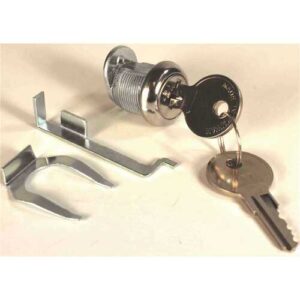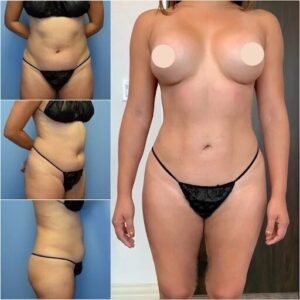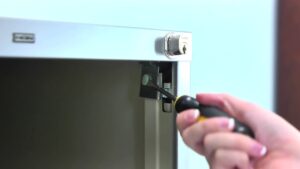
VC Print UK
In the dynamic UK retail landscape, impulse purchases significantly contribute to overall sales and customer engagement. Studies indicate that 54% of UK shoppers are most likely to make impulse buys in-store, compared to 41% online and 10% via social media platforms. This highlights the importance of strategically placed point-of-sale (POS) materials in influencing consumer decisions. By understanding consumer behaviour and implementing effective POS displays, retailers can enhance sales and customer satisfaction.
What Is Point of Sale Printing?
Point of sale (POS) printing is the process of creating and producing printed materials that are intended to capture customer interest and encourage transactions at the point of sale. These materials are strategically placed near checkout areas to influence consumer behaviour and drive impulse buys.
Types of POS Printed Materials
Common examples of point of sale printing materials include:
- Counter Display Units (CDUs): Compact displays placed on counters to showcase products or promotions.
- Free-Standing Display Units (FSDUs): Larger, standalone units that can be positioned throughout the store to highlight specific items.
- Shelf Talkers: Small signs attached to shelves to provide additional product information or promotional messages.
- Posters and Banners: Large-format prints used to grab attention and communicate key messages.
- Floor Graphics: Printed materials applied to the floor to guide customers or highlight promotions.
Materials Used in POS Printing
POS materials are printed on various substrates, including:
- Cardboard: Lightweight and cost-effective, suitable for temporary displays.
- Foam Board: Rigid and durable materials are perfect for creating high-quality displays.
- Acrylic and Metal: Premium materials used for long-lasting and high-end displays.
Benefits of POS Printing
Effective POS printing offers several advantages:
- Increased Visibility: Draws attention to products and promotions, increasing visibility and sales.
- Enhanced Brand Recognition: Reinforces brand identity through consistent messaging.
- Boosted Sales: Encourages impulse purchases and creates upselling opportunities, boosting sales.
- Improved Customer Experience: Provides clear information and guides purchasing decisions.
Understanding Impulse Buying Behaviour in the UK
Shopping on impulse refers to unplanned purchases made by consumers, which are frequently encouraged by in-store stimulation. According to ADvendio, 54% of UK customers prefer to make impulse purchases at the store level, as opposed to 41% online and 10% via online social networking platforms.
Factors Influencing Impulse Purchases
Several elements contribute to impulse buying:
- Monetary Offers and Deals: Discounts and promotions are key motivators, driving customer purchases.
- Persuasive Displays: Visually appealing POS materials capture attention and boost customer interest.
- Product Placement: Strategic positioning near checkout areas enhances visibility and drives sales.
Table: Effective POS Materials
| Material Type | Key Feature | Ideal Placement |
| Strut Cards | Freestanding display | Checkout areas |
| Shelf Talkers | Attached to shelves | Aisle ends |
| Digital Displays | Interactive content | High-traffic zones |
Disclaimer: For any cost-related information or specific product offerings, please refer to your website.
The Role of POS Materials in Retail
Point-of-sale items include a variety of tools designed to capture consumer interest and drive sales. These include:
- Strut Cards: Free standing displays are a great way to highlight marketing and grab attention.
- Shelf Talkers: Small signs on shelves inform customers about deals and encourage purchases.
- Digital Displays: Interactive screens provide detailed product information, enhancing engagement.
Effective POS materials can increase in-store sales by 12% to 27%.
Designing Effective POS Materials
Creating impactful POS materials involves:
- Clear Messaging: Conveying promotions clearly boosts engagement and drives quick action.
- Eye-Catching Graphics: Utilising bold colours and visuals grabs attention and enhances appeal.
- Strategic Placement: Positioning near high-traffic areas, like checkouts, boosts visibility and sales.
Psychological Triggers to Consider
Incorporating psychological triggers can enhance effectiveness:
- Urgency: Limited-time offerings create urgency and encourage speedy action.
- Scarcity: Concentrating on restricted supply stimulates buyers to make quick purchasing decisions.
- Social Proof: Displaying customer reviews helps build trust and credibility with buyers.
Best Practices for Implementing POS Materials
To maximise the impact of POS materials:
- Regular Updates: Refresh displays to align with current promotions.
- Staff Training: Ensure employees understand the purpose and placement of POS materials.
- Data Analysis: Monitor sales data to assess the effectiveness of different displays.
What Is a Strut in Printing?
In the printing process, a “strut” is a stiff framework that is affixed to the rear of a display card, also known as a strut card or showcard. This support, typically made from folded cardboard, enables the card to stand upright without additional support, making it ideal for countertop or point-of-sale displays. Strut card printing is commonly used in retail environments to promote products, services, or special offers due to their stability and visibility.
How to Make a Card for Printing
Creating a card for printing involves several key steps:
- Design the Card: Use graphic design software like Canva or Adobe Express to create your card layout. Ensure the design includes bleed areas (usually 3mm) to prevent white edges after trimming. Incorporate high-resolution images and legible fonts.
- Choose the Right Dimensions: Decide on the card size (e.g., A5, A4) and orientation (portrait or landscape). Standard greeting cards are often 5 x 7 inches, but sizes can vary based on your needs.
- Select Paper and Finish: Choose a suitable paper stock (e.g., 250gsm silk-coated paper) and finish (e.g., gloss or matte lamination) to enhance the card’s appearance and durability. For instance, Digital Printing UK recommends 250gsm silk-coated paper for strut cards.
- Prepare for Printing: Save your design in a print-ready format, such as PDF or TIFF, ensuring all fonts are embedded and images are at least 300 DPI. If printing at home, set your printer to the appropriate paper type and quality settings.
- Print the Card: Print a test copy to check for any issues with alignment, colours, or text. Once satisfied, print the final batch.
Conclusion
Leveraging point-of-sale (POS) materials is a potent strategy for driving impulse purchases in the UK retail sector. By understanding consumer behaviour and implementing effective POS displays, retailers can enhance sales and customer satisfaction. For high-quality point of sale printing and strut card printing services, partnering to elevate your retail marketing efforts. VC Print offers a wide range of POS materials, including shelf prints, tent cards, and strut cards, all printed on premium materials with UV lightfast ink. Their products are designed to be recyclable and durable, ensuring long-lasting impact in-store.







